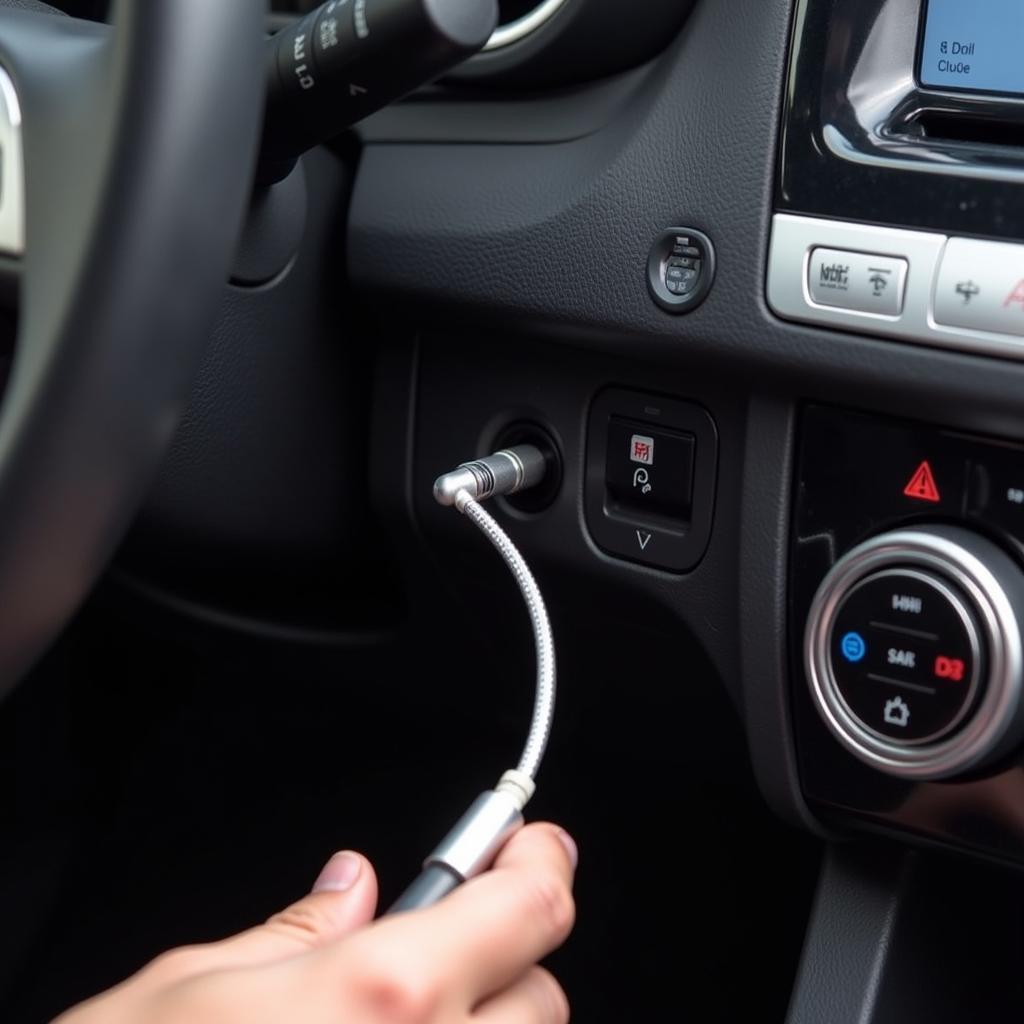Dealing with a faulty Safety 1st car seat can be frustrating. Whether it’s a stuck buckle, loose straps, or a problem with the base, a malfunctioning car seat can compromise your child’s safety. This comprehensive guide will walk you through common Safety 1st car seat problems and provide step-by-step instructions on how to fix them.
Common Safety 1st Car Seat Problems and Solutions
Safety 1st car seats are popular for their affordability and features. However, like any other car seat, they can encounter issues. Let’s delve into some of the most frequently reported problems and how to tackle them.
Stuck Buckle
A stuck buckle is a common issue, often caused by dirt, debris, or general wear and tear. Try cleaning the buckle area with a small brush and using a dry lubricant like graphite. Avoid using oils or grease, as these can attract more dirt and grime.
- Clean the buckle: Use a dry, soft-bristled brush to remove any visible dirt or debris from the buckle mechanism.
- Apply dry lubricant: Spray a small amount of dry lubricant, such as graphite, into the buckle mechanism.
- Test the buckle: Repeatedly press and release the buckle to ensure it’s functioning smoothly.
Loose Straps
Loose straps can be a safety hazard, as they may not adequately restrain your child in a crash. Check the car seat manual for specific instructions on adjusting the straps. Usually, you can tighten the straps by pulling on the adjuster strap located at the bottom of the car seat.
- Locate the adjuster strap: Find the adjuster strap, typically located near the bottom of the car seat, where the straps come out.
- Pull the adjuster strap: Pull the adjuster strap firmly to tighten the harness straps. Make sure the straps are snug against your child.
- Check the tightness: Ensure the straps are tight enough that you cannot pinch any excess fabric at the shoulder level.
Problems with the Base
If the base is wobbly or doesn’t seem to lock securely, it could be due to improper installation or a damaged base. Double-check the installation instructions and make sure the base is level and securely attached to the vehicle’s seat. If the base is damaged, contact Safety 1st for a replacement.
- Check the installation: Refer to the car seat manual and ensure the base is installed correctly according to the manufacturer’s instructions.
- Inspect the base: Look for any visible signs of damage, such as cracks or broken parts.
- Contact Safety 1st: If the base is damaged, contact Safety 1st customer service for assistance or a replacement.
How to Prevent Future Issues
Preventing problems is always better than fixing them. Regularly inspect your Safety 1st car seat for any signs of wear and tear. Clean the car seat according to the manufacturer’s instructions and address any minor issues promptly.
“Regular maintenance is key to ensuring the longevity and safety of your car seat,” advises John Smith, Certified Child Passenger Safety Technician. “A quick check-up can often prevent minor issues from becoming major problems.”
Conclusion
Knowing How To Fix Safety 1st Car Seat issues is crucial for ensuring your child’s safety. By addressing common problems like stuck buckles, loose straps, and base issues promptly, you can keep your car seat in optimal working condition. Don’t hesitate to contact Safety 1st or a certified car seat technician if you need further assistance. For personalized advice and support, connect with us at AutoTipPro at +1 (641) 206-8880 or visit our office at 500 N St Mary’s St, San Antonio, TX 78205, United States.
FAQ
- How often should I clean my Safety 1st car seat?
- What should I do if the straps are still loose after adjusting them?
- Can I use any type of lubricant on the buckle?
- Where can I find the model number of my Safety 1st car seat?
- How do I know if my car seat base is installed correctly?
- What should I do if my car seat has been in a crash?
- How long can I use a Safety 1st car seat?





Leave a Reply